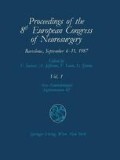Summary
The value of EEG data and evoked potentials (EP), combined with the patient’s clinical status, are important parameters used to document decerebration, but their reliability is at its best when the decerebration is nearly complete. Based on spectral analysis of the EEG we compiled criteria for the cerebral function with application of agents known to alter the normal EEG. We found very distinct and different pattern responses in spectral analysis of the EEG after the bolus injection of 100–500 mg Thiopental, correlating well with the patient’s prognosis. In a study with 40 patients, those who showed a significant increase of power in all frequencies, especially a short lasting increase in beta (3–7 min) survived in 84%. On the other hand, all the patients who had a decrease of absolute power in all frequency band died, even when brainstem reflexes and various pain reactions were still present. Spectral analysis after Thiopental bolus injection also permits a very immediate assessment of slight improvements or deteriorations in the clinical course.
Access this chapter
Tax calculation will be finalised at checkout
Purchases are for personal use only
Preview
Unable to display preview. Download preview PDF.
References
Bauer G, Gerstenbrand F, Rumpl E (1979) Varieties of the locked-in syndrome. J Neurol 221: 77–91.
Bickford R, Billinger TW, Fleming NI, Stewart L (1972) The compressed spectral array (CSA-A pictorial EEG). Proc San Diego Biomed Symp 11: 365–370.
Bricolo A, Turazzi S, Faccioli F, Odorizzi F, Sciaretta G, Erculiani P (1978) Clinical application of compressed spectral array in long-term EEG monitoring of comatose patients. Electroenceph Clin Neurophysiol 45: 211–225.
Bricolo A, Turazzi S, Faccioli F (1979) Combined clinical and EEG examinations for assessment of severity of acute head injures. Acta Neurochir (Wien) [Suppl] 28: 35–39.
Gaab MR (1981) Die Registrierung des intrakraniellen Druckes. Grundlagen, Ergebnisse und Möglichkeiten. Habil Schrift, Med Fakultät, Würzburg.
Greenberg RP, Becker DP, Mayer DJ, Miller JD (1977) Evaluation of brain function in severe human head trauma with multimodality evoked potentials. Part 2: Localization of brain dysfunction and correlation with posttraumatic neurological conditions. J Neurosurg 47: 163–177.
Hansen RB, Niedermeyer E (1987) Electroencephalography and Intensive Care Medicine. In: Landolt AM (ed) Intensive care and monitoring of the neurosurgical patient, progress in neurological surgery, vol 12. Karger, Basel, pp 105–145.
Klug N (1982) Brainstem auditory evoked potentials in syndroms of decerebration, bulbar syndrome and in central death. J Neurol 227: 219–225.
Lobato RD, Cordobes F, Rivas JJ, de la Fuente M, Montero A, Barcena A, Perez C, Cabrera A, Lamas E (1983) Outcome from severe head injury related to the type of intracranial lesion. A computerized tomography study. J Neurosurg 59: 762–774.
Niedermeyer E, Yarworth S, Zobniw AM (1977) Absence of drug-induced beta-activity in the electroencephalogram. Eur Neurol 15: 77–84.
Pichlmayr I, Lips U, Künkel H (1983) Das Elektroenzephalogramm in der Anästhesie. Springer, Berlin Heidelberg New York Tokyo, pp 213–224.
Steudel WI, Krüger U (1979) Using the spectral analysis of the EEG for prognosis of severe brain injuries in the first posttraumatic week. Acta Neurochir (Wien) [Suppl] 28: 40–42.
Turazzi S, Bricolo A, Pasut ML, Formenton A (1987) Changes produced by CT scanning in the outlook of severe head injury. Acta Neurochir (Wien) 85: 87–95.
Wilson WP, Tindal GT, Greenfield JC (1965) Effects of an acute increase of intracranial pressure upon the electroencephalogram. Electroenceph Clin Neurophysiol 19: 184–186.
Author information
Authors and Affiliations
Editor information
Editors and Affiliations
Rights and permissions
Copyright information
© 1988 Springer-Verlag/Wien
About this paper
Cite this paper
Klein, H.J., Rath, S.A., Göppel, F. (1988). The Use of EEG Spectral Analysis After Thiopental Bolus in the Prognostic Evaluation of Comatose Patients with Brain Injuries. In: Isamat, F., Jefferson, A., Loew, F., Symon, L. (eds) Proceedings of the 8th European Congress of Neurosurgery Barcelona, September 6–11, 1987. Acta Neurochirurgica Supplementum 42, vol 42. Springer, Vienna. https://doi.org/10.1007/978-3-7091-8975-7_7
Download citation
DOI: https://doi.org/10.1007/978-3-7091-8975-7_7
Publisher Name: Springer, Vienna
Print ISBN: 978-3-7091-8977-1
Online ISBN: 978-3-7091-8975-7
eBook Packages: Springer Book Archive

